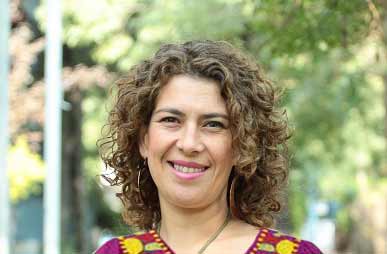Providing basic knowledge about human cerebral cortex development at embryonic and early fetal stage is the goal of the research project led by Dr. Lorena Sulz, which will be conducted during the next three years.
According to reports, some psychiatric disorders, such as schizophrenia and bipolar disorder, begin during embryonic development. Most of the studies on this topic have been conducted on animal samples, due to ethical restraints and limited access to human embryos. This is the reason why the field of human embryology related to neurology is an area which has not been thoroughly explored.
In this context, Dr. Lorena Sulz, academic of Universidad de Santiago’s School of Medicine, will carry out the study “Role of nitric oxide in human cerebral cortex morphogenesis”, which intends to gather critical information about the mechanisms involved in the development of nerve cells during the first weeks of pregnancy.
The study will be conducted during the next three years and is funded by the Scientific and Technological Research Department (Dicyt) of Universidad de Santiago. It is a unique study as it is the first time that this branch of embryology involves human samples, which were obtained from de Institution’s Embryo-Fetology collection.
The idea is to gather basic knowledge about this topic in order to explain if the presence of nitric oxide is also essential for producing new nerve cells in human cortex, as it has already been proved in animal samples and in neuronal regeneration processes, both in human beings and mice. “We want to know if this molecule is expressed in the cerebral cortex being developed and identify in what areas and at what stages it is present. In this way, we can infer approximately the process in which it is involved,” the academic explains.
The study will be carried out in two stages. The first one will completely focus on the morphological analysis of cells and embryos being used. This stage, which is under execution at this moment, will allow describing the human cerebral cortex development process. After identifying each phase, the second stage will allow identifying cells that produce nitric oxide and the process in which it would be involved.
The study will be conducted at the Embryology Unit of the Faculty of Medical Sciences, Universidad de Santiago, led by Dr. Jaime Pereda, the project`s co-investigator, M.S. Carlos Godoy and Dr. Sulz. The three professionals, experts in their areas of research interest, complement each other’s work in a way that has helped to a good execution of their projects. “In general, the three of us work together because we use very similar techniques: only the molecule and the body organ of interest are different. We have adjusted to each other very well,” Dr. Sulz adds.
However, the expectations are long-term. The research seeks to establish some theoretical basis for human cerebral cortex development, in order to develop new studies on this topic. The results will be presented in different papers in specialized publications and in different congresses and conferences.
Finally, Dr. Lorena Sulz expects that during the research, they will be able to prove that nitric oxide takes part in human cerebral cortex development, just like it does in laboratory animals. “As it is basic science, it only provides a knowledge base. But if nitric oxide is known to be significant in cerebral cortex development, further care should be taken so as not to interrupt this process during the critical period, preventing potential malformations. This additional knowledge could be a contribution to prenatal care,” the researcher concludes.

Translated by Marcela Contreras



